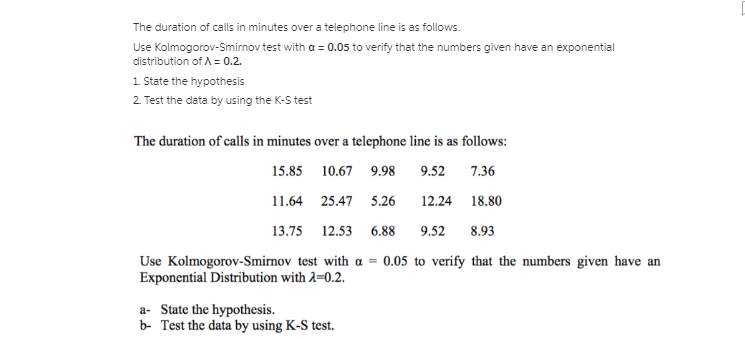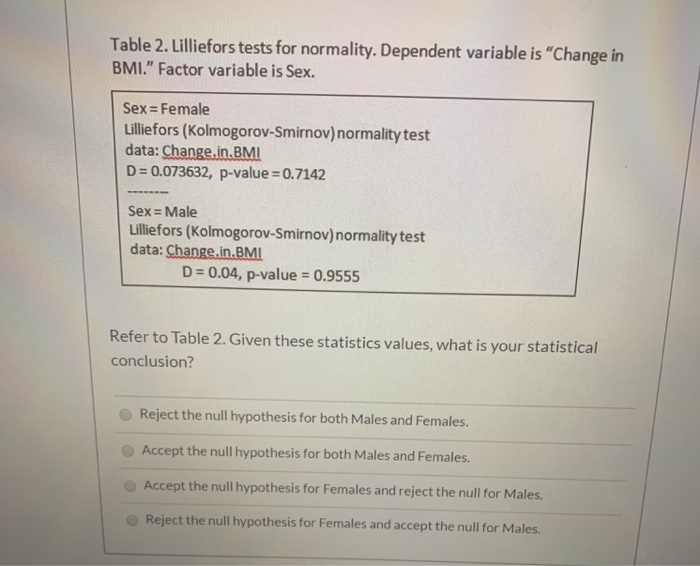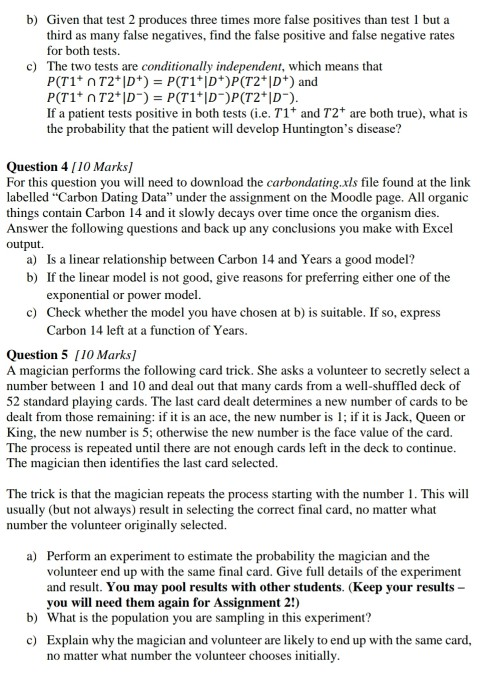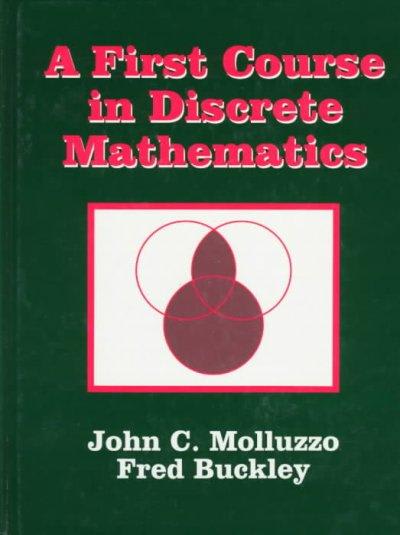


@
The duration of calls in minutes over a telephone line is as follows. Use Kolmogorov-Smirnov test with a = 0.05 to verify that the numbers given have an exponential distribution of A = 0.2. 1. State the hypothesis 2. Test the data by using the K-S test The duration of calls in minutes over a telephone line is as follows: 15.85 10.67 9.98 9.52 7.36 11.64 25.47 5.26 12.24 18.80 13.75 12.53 6.88 9.52 8.93 Use Kolmogorov-Smirnov test with a = 0.05 to verify that the numbers given have an Exponential Distribution with 2=0.2. a- State the hypothesis. b- Test the data by using K-S test.Table 2. Lilliefors tests for normality. Dependent variable is "Change in BMI." Factor variable is Sex. Sex = Female Lilliefors (Kolmogorov-Smirnov) normality test data: Change.in.BMI D = 0.073632, p-value =0.7142 Sex = Male Lilliefors (Kolmogorov-Smirnov) normality test data: Change,in.BMI D = 0.04, p-value = 0.9555 Refer to Table 2. Given these statistics values, what is your statistical conclusion? Reject the null hypothesis for both Males and Females. O Accept the null hypothesis for both Males and Females. O Accept the null hypothesis for Females and reject the null for Males. O Reject the null hypothesis for Females and accept the null for Males.b) Given that test 2 produces three times more false positives than test I but a third as many false negatives, find the false positive and false negative rates for both tests. c) The two tests are conditionally independent, which means that P(T1* nT2*[D+) = P(T1*[D+)P(T2*[D+) and P(T1* n T2*[D-) = P(T1*[D )P(T2+|D-). If a patient tests positive in both tests (i.e. 71+ and 72+ are both true), what is the probability that the patient will develop Huntington's disease? Question 4 / 10 Marks] For this question you will need to download the carbondating x/s file found at the link labelled "Carbon Dating Data" under the assignment on the Moodle page. All organic things contain Carbon 14 and it slowly decays over time once the organism dies. Answer the following questions and back up any conclusions you make with Excel output. a) Is a linear relationship between Carbon 14 and Years a good model? b) If the linear model is not good, give reasons for preferring either one of the exponential or power model. c) Check whether the model you have chosen at b) is suitable. If so, express Carbon 14 left at a function of Years. Question 5 /10 Marks] A magician performs the following card trick. She asks a volunteer to secretly select a number between 1 and 10 and deal out that many cards from a well-shuffled deck of 52 standard playing cards. The last card dealt determines a new number of cards to be dealt from those remaining: if it is an ace, the new number is 1; if it is Jack, Queen or King, the new number is 5; otherwise the new number is the face value of the card. The process is repeated until there are not enough cards left in the deck to continue. The magician then identifies the last card selected. The trick is that the magician repeats the process starting with the number 1. This will usually (but not always) result in selecting the correct final card, no matter what number the volunteer originally selected. a) Perform an experiment to estimate the probability the magician and the volunteer end up with the same final card. Give full details of the experiment and result. You may pool results with other students. (Keep your results - you will need them again for Assignment 2!) b) What is the population you are sampling in this experiment? c) Explain why the magician and volunteer are likely to end up with the same card, no matter what number the volunteer chooses initially.Question 2 Prepare dummy ANOVA table for the data of an experiment using: Completely randomised design CRD), Randomised complete block design (RCBD), and Latin square design (LSD)













